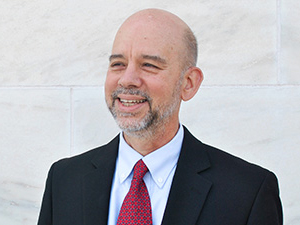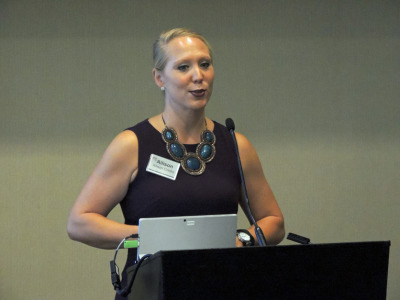If Congress succeeds in passing a farm bill this year, look for the nation’s largest conservation program – focused on improving farm and ranch environmental and resource management – to see, at best, a substantial cutback.
Originally included in the 2002 farm bill and dubbed the Conservation Security Program, the Conservation Stewardship Program (CSP), enrollment since 2010 has swollen past 104 million crop and grazing enrollment acres, making it by far the Department of Agriculture’s largest program in enrolled land area. With CSP, USDA divvies out about $1.4 billion a year to support progress on farmers’ whole-farm conservation plans, which is about the same sum as it pays farmers in its other leading conservation initiative, the Environmental Quality Incentives Program (EQIP).
Note first that parts of the USDA budget went on hold as the 2014 farm bill expired Sept. 30. By the end of the year, Congress might negotiate a compromise out of the divergent Senate and House legislation, extend the 2014 law, or do neither, igniting a wave of fiscal consternation. Passing a farm bill this year is problematic, since House Republicans included new work requirements on recipients of public food aid as a central component of their partisan bill. The chances the Senate, which passed its farm bill by an overwhelming 86-11 vote, will consent are near zero.
Albeit not as divisive as the farm bill nutrition faceoff, the vastly divergent handling of CSP in the two bills also makes for an essential conflict in the 10-year conservation purse in the Senate and House farm bills.
The projected House bill spending for EQIP, according to the Congressional Budget Office, will climb from about $1.4 billion a year now to $3 billion. That program awards grants to share farmers’ costs of specific conservation projects for irrigation, livestock waste lagoons, fences to implement grazing rotations and similar improvements. Meanwhile, CSP’s otherwise ongoing funding of $12.6 billion over 10 years is zeroed out. Then, $7.7 billion of that sum is reassigned to EQIP, though part of that transfer is supposed to pay for new CSP-like “stewardship contracts.” The bill reassigns CSP funds to other conservation programs, too, but also shrinks overall 10-year conservation spending by $800 million.
The Senate bill, meanwhile, maintains the overall 2018 level of conservation spending, but cuts EQIP and CSP by $2.5 billion, combined, over 10 years in favor of funding purchases of conservation easements and other purposes.
Conservation interests might be better served by just renewing the 2014 farm bill than by passing either the House or Senate versions, since extending the legislation would mean no funding cuts for the major conservation programs such as CSP, suggests Ferd Hoefner, senior advisor to the National Sustainable Agriculture Coalition. That’s even though NSAC wants a bill passed for reasons beyond the conservation title, he says, and although the group officially views the more broadly supported Senate bill as “the way forward.”

Ferd Hoefner, NSAC
Hoefner declares that the House bill “is, in fact, getting rid of CSP.” The program, he said, “has always been about management practices,” requiring the farmer to solve a menu of resource problems to qualify for CSP funds. Instead, he says, the House bill has just a bare reference to a new “stewardship contract,” and there are “no standards,” leaving USDA to decide what the House bill’s new line in the EQIP statute will mean.
On the other hand, “for the most part, the mainline ag groups are very intrigued” by the House bill’s big cash swing toward EQIP and are willing “to give it a shot,” says Don Parrish, regulatory relations director for the American Farm Bureau Federation.
While CSP participation can be quite prescriptive and bureaucratic, Parrish said, most Farm Bureau members “really like EQIP” and its simpler procedures, wherein “farmers are paid contractually for implementing (conservation) practices. So we’re much more into the EQIP category. We think that gets more conservation on the ground.”
Allison Rivera, executive director of government affairs for the National Cattlemen’s Beef Association, echoed Parrish’s view: “We like the streamlining of the working lands programs . . . taking the best parts of CSP and pushing them over to one working lands program (and) having more funding for EQIP. Our producers were happy to see that,” she said.

Allison Rivera, NCBA
Surprisingly, however, EQIP funding was not a farm bill priority for some of the major livestock organizations, even though EQIP has long been popular among their members. It seems ironic, since the 2014 farm bill mandated at least 60 percent of EQIP grant dollars go to livestock operations.
“We have a lot of members who’ve used EQIP,” said American Sheep Industry Association (ASI) Executive Director Peter Orwick. But when ASI made its top farm bill wishes known, it included R&D to fight animal diseases, funding of export promotion and so forth, Orwick said, but EQIP “just didn’t make the priority list.”
Similarly, Jim Monroe, senior communications director for the National Pork Producers Council, said other issues were just more important and the NPPC took no position on continued EQIP funding.
Meanwhile, the Senate bill trims the 60 percent minimum for livestock farms to 50 percent, and the House bill simply drops any minimum. Parrish thinks livestock operators will still claim a major part of EQIP funds, but he expects the program, especially with the new stewardship contracts plugged in, will “provide a lot more opportunity to address resource concerns across the whole farm” in the future.
However, livestock operations won't be the only ones applying. Provisions in both Senate and House bills let irrigation or water management districts apply in never-before competition with farmers for EQIP grants. Section 2303 of the amended Senate bill provides for such contracts in “a streamlined contracting process to implement water conservation or irrigation practices under a watershed-wide project that will effectively conserve water, provide fish and wildlife habitat, or provide for drought-related environmental mitigation.”
University of Illinois economists, in their FarmDoc explanation of those new EQIP provisions, note that sending significant EQIP dollars to irrigation entities could shift the share of the program’s funds regionally to the dry Southern Plains and West, where the country’s irrigation is concentrated.
Separately, some farm and conservation groups are less than pleased with proposed operational and funding changes for the Regional Conservation Partnerships Program (RCPP). Both chambers shift a lot of CSP funds to RCPP, and the Senate bill, for example, would allow for “project partners,” who would typically be wildlife, environmental and other private entities, to handle RCCP funds, receive payment for administration, etc., rather than keeping all payments directly from USDA to farmers.
Parrish and Hoefner both expressed dislike for the Senate’s RCCP approach, and a National Association of Conservation Districts letter to farm bill conferees expresses opposition and asks that the “the funding pool be left in its current arrangement.”
“Most concerning,” NACD said, “is the policy change that would divert up to 30 percent of RCPP funds to a new grant pilot program, giving farm bill dollars to private partners . . .”
For more news, go to www.Agri-Pulse.com


